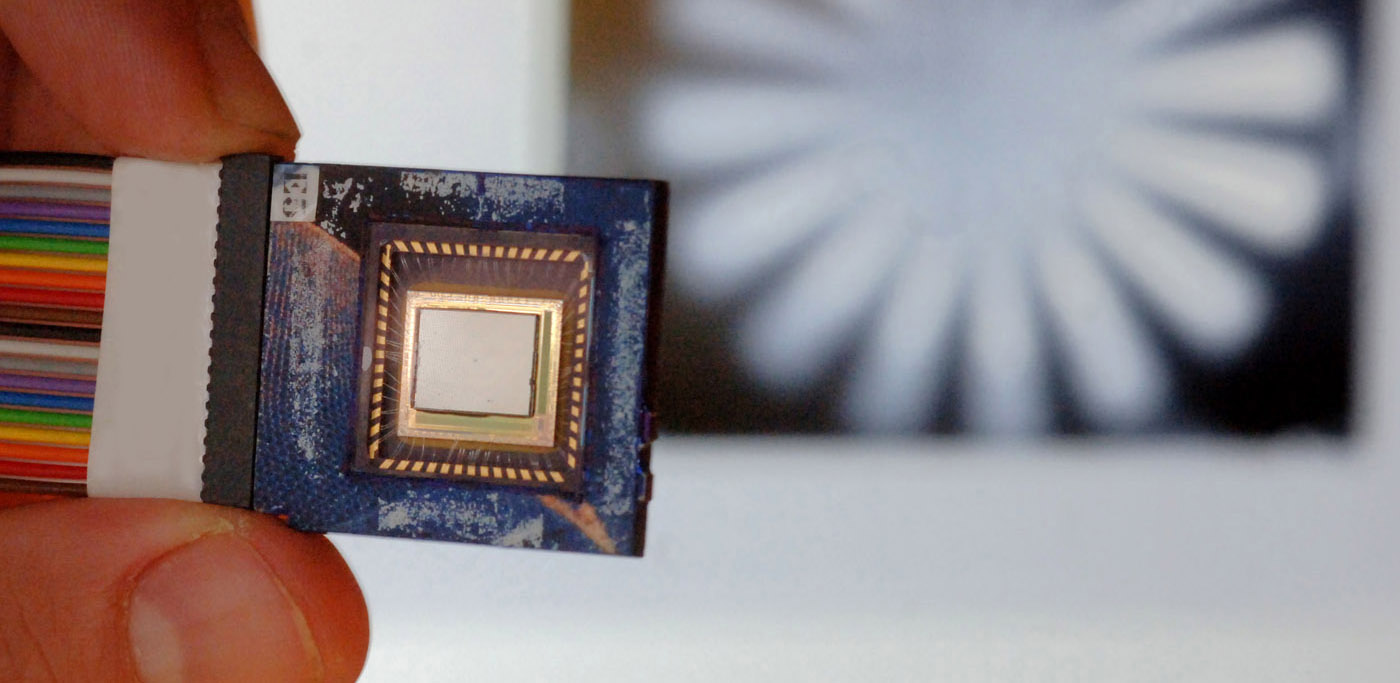The use of miniaturized imaging systems (cameras) in mobile devices (cell phones, laptops, vehicle cameras, microscopes…) requires that the optoelectronic, electronic and optical components are scaled down to a minimum size. The basic requirements for this are a short focal distance and a small number of imaging optics components.
For this reason, the Fraunhofer IOF developed an imaging concept as an alternative to the single aperture system which is modeled on insect eyes.
An insect eye consists of an array of hundreds to tens of thousands of tiny lenses, each with a small group of photo receptors arranged on a curved surface. Each microlens only focuses the light on its receptors which comes from a certain direction of the object. As a result, each optical channel generates just one image spot.
The totality of signals from all channels supplies the complete image. For small invertebrate animals, this is the best solution for collecting sufficient visual information on the surroundings without overburdening the insect brain with complex image processing.
The principle has now been technically implemented in micro-optical compound eye lenses.

